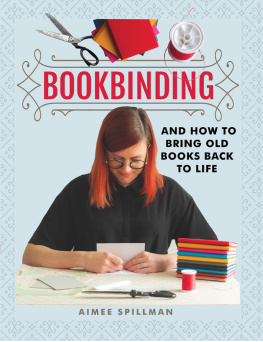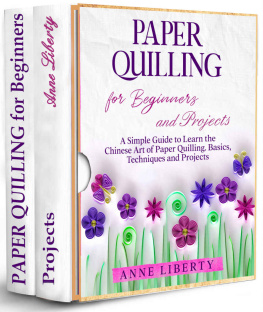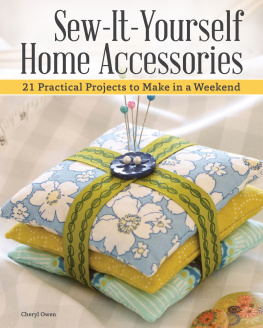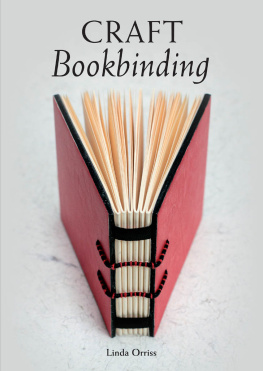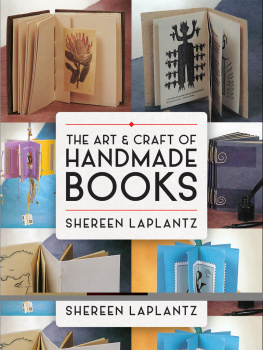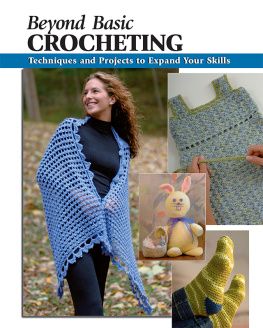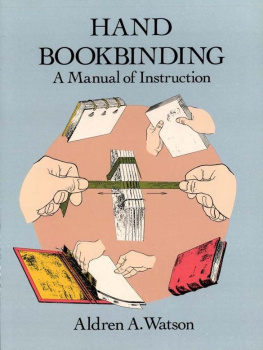Pagebreaks of the print version

BOOKBINDING
AND HOW TO BRING OLD BOOKS BACK TO LIFE
Acknowledgements
Thank you to all of my friends and family who have helped me with this book, your help and support has meant so much to me.
Thank you to my husband who has never stopped believing in me and my abilities, your love and support sustained me through this process.
BOOKBINDING
AND HOW TO BRING OLD BOOKS BACK TO LIFE
AIMEE SPILLMAN
First published in Great Britain in 2021 by
Pen & Sword WHITE OWL
An imprint of
Pen & Sword Books Ltd
Yorkshire Philadelphia
Copyright Aimee Spillman 2021
ISBN 9781526773784
eISBN 9781526773791
Mobi ISBN 9781526773791
The right of Aimee Spillman to be identified as Author of this work has been asserted by her in accordance with the Copyright, Designs and Patents Act 1988.
A CIP catalogue record for this book is
available from the British Library
All rights reserved. No part of this book may be reproduced or transmitted in any form or by any means, electronic or mechanical including photocopying, recording or by any information storage and retrieval system, without permission from the Publisher in writing.
Design: Paul Wilkinson
Pen & Sword Books Limited incorporates the imprints of Atlas, Archaeology, Aviation, Discovery, Family History, Fiction, History, Maritime, Military, Military Classics, Politics, Select, Transport, True Crime, Air World, Frontline Publishing, Leo Cooper, Remember When, Seaforth Publishing, The Praetorian Press, Wharncliffe Local History, Wharncliffe Transport, Wharncliffe True Crime and White Owl.
For a complete list of Pen & Sword titles please contact:
PEN & SWORD BOOKS LIMITED
47 Church Street, Barnsley, South Yorkshire, S70 2AS, England
E-mail:
Website: www.pen-and-sword.co.uk
Or
PEN AND SWORD BOOKS
1950 Lawrence Rd, Havertown, PA 19083, USA
E-mail:
Website: www.penandswordbooks.com
Introduction:
What to Expect From This Book and How to Use It
WELCOME TO BOOKBINDING FOR BEGINNERS, Im Aimee and I will be your guide through the wonderful world of bookbinding, repairs and upcycling your books. This book will guide you through the basics, help you have fun and let your creativity flow.
In each chapter I have listed the tools and materials you will need and explained what we will be doing together over the next few pages. Within the instructions I will ask you to occasionally read ahead a few steps to help you get to grips with what we are going to be doing. Where I ask you to, please do this as it will help you out, especially if its your first time. I have also left space in some for you to make notes. This is for you to note down what went well and what potentially didnt. It is then useful to read through these notes before you start again so you can get to grips with your strengths and weaknesses..
This is a beginners guide; the repairs I talk you through are beginners repairs. If you have books that require extensive work please take them to a professional bookbinder like myself to carry out the restoration work. The repairs I have given you will keep your book going for a while and the paper repairs are the same process I would do; just with different tissue.
There is a range of ideas and crafting techniques for you to get to know. They are potentially different to what you are used to so please take your time and be patient with yourself. Improvement will come from practice and learning from mistakes and youll never know unless you give it a go, so why not? Above all, have fun! This is a craft not a lot of people are able to do and it can have a bit of a dry reputation, I hope this brings you as much joy as bookbinding brings me every day.
So be inspired, be creative and see what you can create.
The Book:
Its origins and etymology
A BRIEF HISTORY OF THE BOOK
Originally, scrolls were used to keep records on. In Egypt, scrolls were made from papyrus (see origin of the word paper), which provided large flat sheets to write on that could then be easily rolled up. These large flat papyrus sheets lent themselves to being attached to one another to create larger sheets that were then folded rather than rolled; this was a more efficient use of space and also made them easier to use as you didnt need to unroll the whole scroll to get to the information required, you could just look at each .
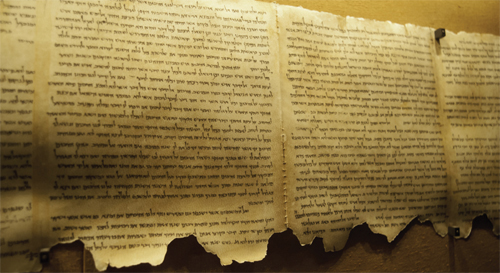
Dead Sea Scroll at Qumran, Israel.
Paper was invented in China around 100BC, however, it took until the 1100s for paper to be manufactured in Europe, with the first paper mill being opened in Xativa in Spain in 1144. Before paper was manufactured in Europe, vellum was used. Vellum is calfskin which has been stretched and treated to make it very strong, but it is also quite stiff. Vellum is very susceptible to changes in atmospheric humidity and therefore is a nightmare for conservators. Paper also suffers when kept at different humidities, but it is a lot easier to control. Paper was lighter, cheaper and easier to mass produce than vellum, so it quickly replaced it as the material of choice for record keeping.
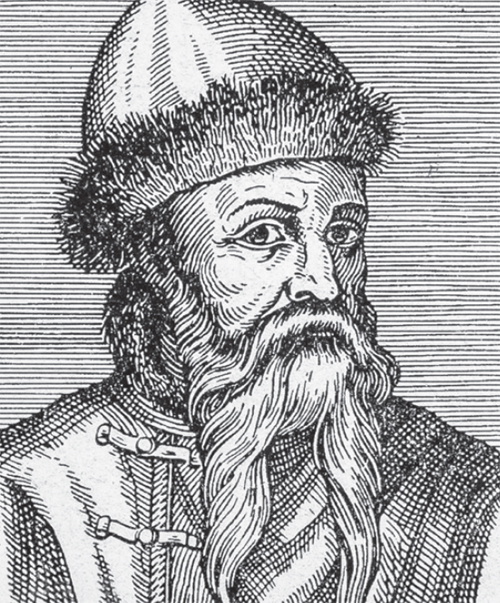
Johannes Gutenberg and a page from the Gutenberg Bible.
The printing press came along in the early 1400s, created by Johannes Gutenberg who used it to print the Gutenberg Bible. This was printed in folios (single sheets folded once); it was the first massproduced and affordable Bible. Before the printing press, each copy of the Bible was hand-scribed, which took a long time. Gutenberg changed the way information was recorded and more importantly how easy it was to share. The printing press changed the way societies grew and aided in the mass literacy of populations; instead of hearing your scripture being read out, it was now accessible to you in your home.
In my opinion, paper and the printing press are amongst the most important inventions to shape society. They have aided in the growth and development of science, medicine, technology, business and the sharing of skills and knowledge as demonstrated in this book.

